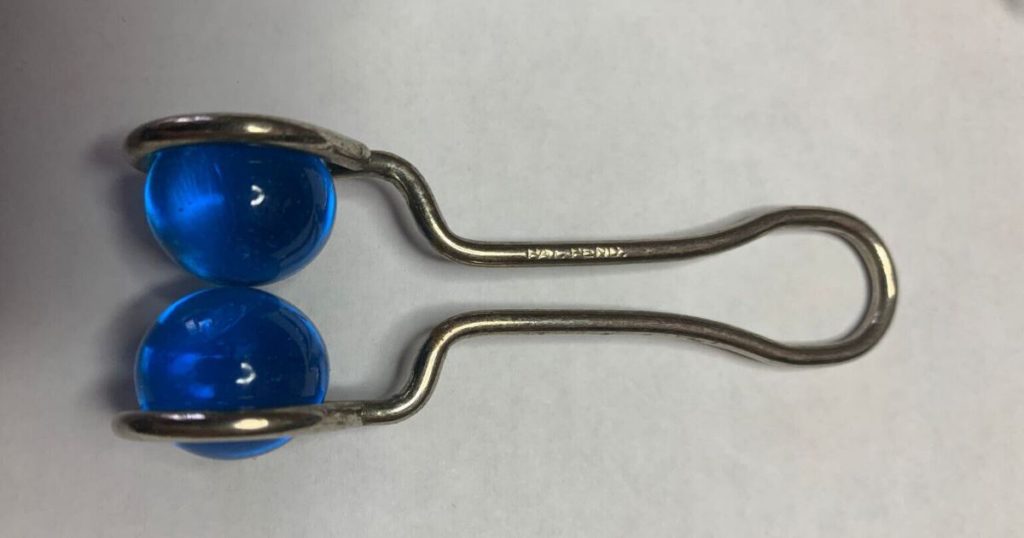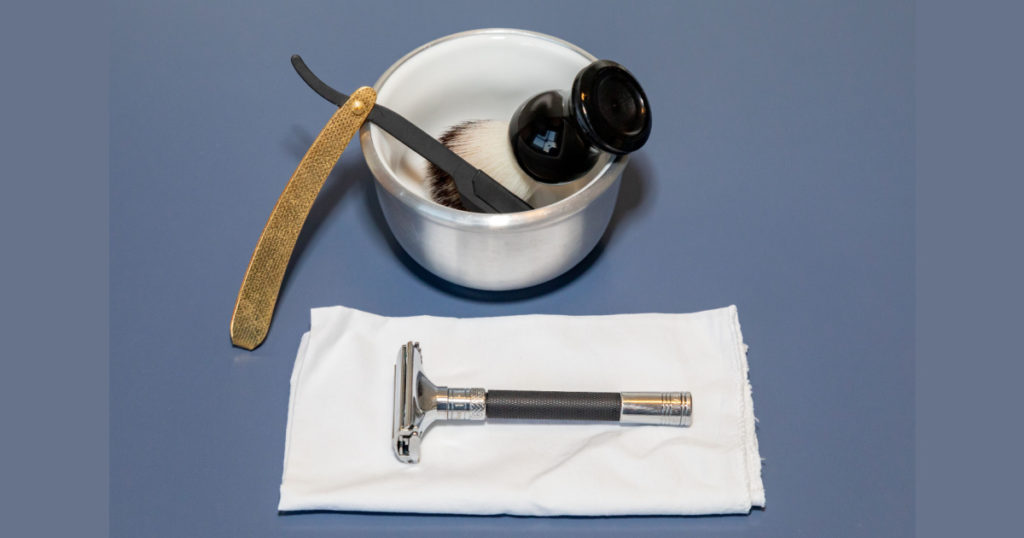It was an Accessory to a Common Grooming Tool, But It’s Now Nothing More Than an Antique Relic
One of the most exciting things about moving into an old house is the possibility of discovery. People have founds all kinds of cool things hidden in their walls, basements, attics, or floorboards. One odd antique relic was found in a home that was 100 years old. A vintage marble razor blade sharpener and it looks nothing like one might expect.

Confused with a Toy
Seemingly resembling a children’s toy that was popular in the 1960’s and 70’s, the antique relic has been mistaken for “Clackers”. As such, many have debated the actual origins of the mysterious object. However, the clackers were made with string and plastic acrylic balls. Meanwhile, the antique relic consists of two glass marbles with a wooden or metal base and steel rod.
So, what does the vintage razor blade sharpener do? As stated in the name, it was used in the 1930’s as a tool to help sharpen razor blades. Seemingly, little is known about the history of the antique relic but its intricate design showcases the craftsmanship of hand made objects during that time. A beautiful reminder of things we don’t often see anymore.
Many Phases of Shaving

Throughout history, the process of shaving has taken several forms. Razors have transformed from clam shells and shark teeth to heavy metal objects that come in a nifty little kit to disposable 4-5 bladed razors and electric razors. What was once done as a symbol of status and wealth is now common amongst most men and women today. Historians believe that shaving dates as far back as 4000 BCE, if not a little further. In fact, there have been cave paintings that show shaving with the use of shells and sharpened flint. Moreover, solid gold and copper razors have been found in the tombs of ancient Egyptians.
As shaving has gained popularity, innovative designs have added more blades to a single razor, implementing designs for safety and precision.
Filling an Important Role

However, obsolete it may seem, the vintage marble razor blade is still a very handy and elegant tool to have around. They can still be used today for sharpening both knives and straight-edged razors. The razor sharpener is also incredibly easy to use and, unlike today’s sharpeners, which can also become jagged and prickly, stays polished and ensures an even sharpening from end to end. Simply run the blade between the two marbles a few times to keep knives and razors finely honed.
Interestingly, this relic is also popular amongst antique collectors or historians who appreciate the finely crafted tools of the past. Despite the limited information available, there are plenty of Reddit users who’ve found the vintage marble razor blade sharpener in old boxes in the garage, and so on. Many have asked what it is and gotten helpful, if not a little comical, responses.

“I knew this one! My grandfather told me stories of selling these door to door when he was young during the Great Depression. They don’t really work at all, but he said he would have a new blade palmed and ask the customer for one of their old blades to demonstrate – he’d swap in the fresh blade to show what a good job it did, and then take off quick after a sale!” One commented.
“It’s called a Kenberry blade sharpener. this is the only image i can find that proves that. they didn’t work that well, so a bunch of people had them laying around and put it to different uses.” Said another.
Meanwhile, someone suggested another possible use for the tool. “Not a razor blade sharpener. It is a holder for a dish towel. It goes on a cabinet handle. The towel slides in and out very easily. This one was my grandmother’s. She sold them in her grocery store back in the 60’s. (next to the dish towels.)”
Because the tool is so old, it may be difficult to pinpoint its exact purpose. Either way, it’s a beautiful piece of handcrafted history that, if nothing else, makes for a great conversational piece.


